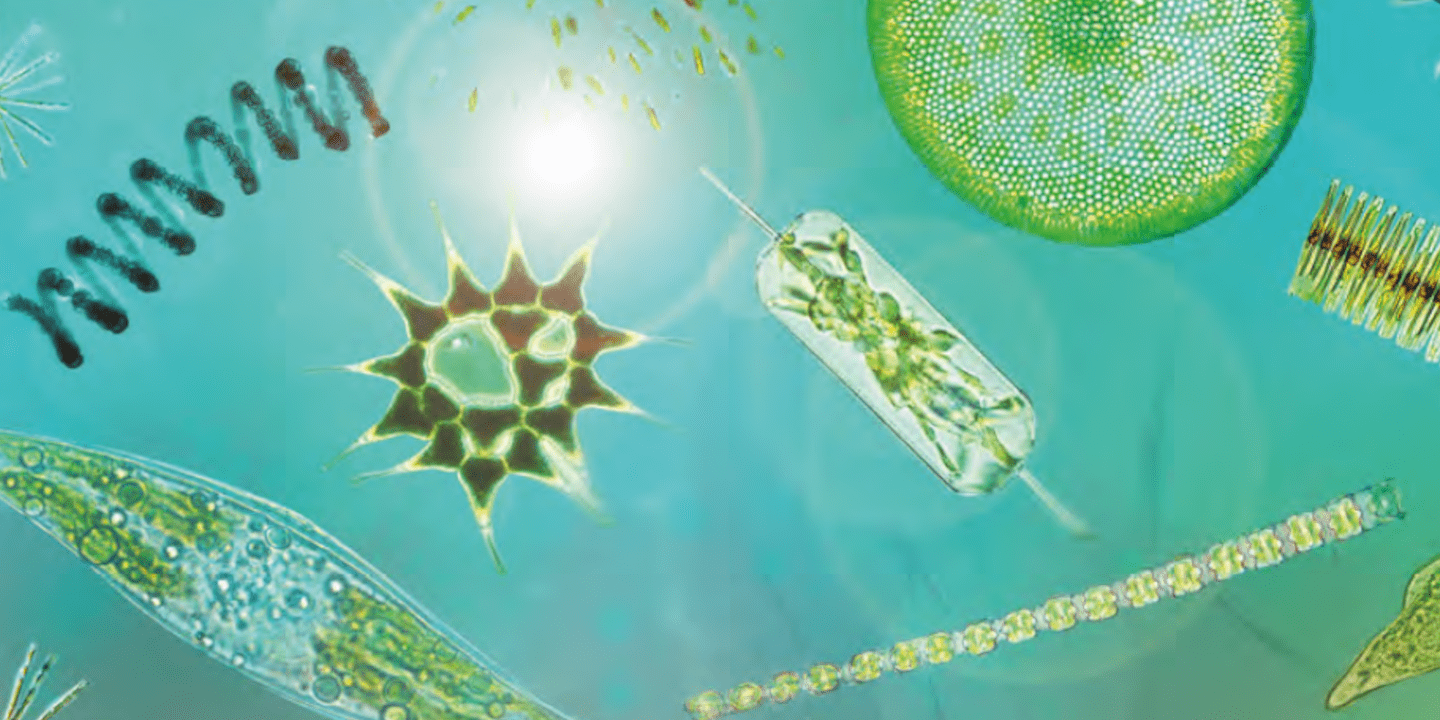Novel Study Elucidates Interlinkage of Cell Geometry and Phytoplankton Diversity
It depends to a major degree on size and shape whether an organism manages to prevail in a given environment. Physicist Dr. Alexey Ryabov and biologist Dr. Onur Kerimoglu, members of the ICBM working group Mathematical Modelling, headed by Professor Dr. Bernd Blasius, together with further colleagues from Germany, Italy, Lituania, and the U.S., took advantage from the exceptional diversity of shapes in phytoplankton to elucidate the relationship between evolutionary conditions, morphology, and taxonomic diversity. Their findings have lately been published in the online edition of `Ecology Letters´, recently also highlighted in the `Science´ magazine.
The diversity of organismal body shapes evolved and is still developing on the pressure of natural selection. It is a response to environmental conditions, interrelations with other species and availability of ecological niches. While these interlinkages are relatively well documented in several multicellular organisms, such knowledge on single-celled organisms is sparse. Up to now, those studies mainly focused on the effects of certain environmental conditions on cell shape distribution. Much less is known, however, about the diversity of shapes in general, their distribution and the effects of body shape on taxonomic diversity as well as on evolutionary success.
It was against this backdrop that Ryabov and colleagues focused their current work on unicellular marine phytoplankton. They also included some heterotrophic members of the so-called dinoflagellates into the study, which exhibit a great diversity of form. By employing more than 5,700 cells from 402 genera, belonging to 16 phyla, the range of shapes and diversity of single-celled phytoplankton was extensively investigated. The scientists classified each cell as one of 38 geometric shapes. Particularly unconventional cell structures were calculated as a sum of single shapes. Cell volume and cell surface area were quantified by using a standardised computer-aided process.
Wide Variety of Shapes
The phytoplankton of intermediate volume in particular displayed a wide variety of shapes, from oblate to extremely elongated forms. Cells of both large and small volumes, however, were compact and mostly spherical. At the same time, the spherical shapes displayed the largest variation of cell volumes. The taxonomic diversity, that is the number of species, genera, and other taxonomic units, was most pronounced for compact cells of intermediate volumes. The more the cell surface area increased for attenuated and flattened cells, the less taxonomic diversity was observed, with this phenomenon actually occurring exponentially. The researchers consider this pattern likely to be universal, as they observed similar biodiversity distributions separately for each of their two extensive data sets. Moreover, they assume surface area and cell size to be important drivers of biodiversity.
Thus, for all phyla a reduction of surface area could likely be an advantageous strategy, the scientists conclude. It would likely reduce the cost of cell walls and make a cell less vulnerable to predators. At the same time, it might lead to higher shape diversity of compact cells compared to elongated cells in each cell volume class. For diatoms, though, the researchers observed significant diversity peaks for elongated shapes as well. They attribute these findings to the occurrence of silica cell walls as a major evolutionary innovation, allowing diatoms an extraordinary shape diversity which may have contributed to their ecological success. „Our study emphasizes the significance of the geometrical shape of cells for microbial biodiversity“, Blasius says, and he adds that this might not only open a novel approach to marine biodiversity research, but also lead to a better understanding of the evolutionary rules of life.
Original publication
Alexey Ryabov; Onur Kerimoglu; Elena Litchman; Irina Olenina; Leonilde Roselli; Alberto Basset; Elena Stanca; Bernd Blasius: „Shape matters: the relationship between cell geometry and diversity in phytoplankton“, Ecology Letters, doi: 10.111/ele.13680
Weblinks
• https://doi.org/10.1111/ele.13680
• https://science.sciencemag.org/content/371/6530/twil.full
